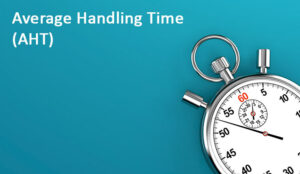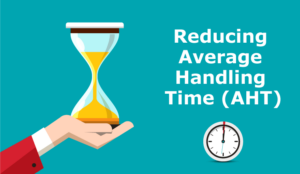Thomas Rødseth, VP of Product & Marketing at Intelecom, takes a closer look at Average Handle Times in multichannel contact centres
With all the talk of Customer Experience Management and Customer Effort, it’s easy to forget that customer service managers don’t have bottomless pits of money. Best practice in contact centre management isn’t just about being effective, it’s also about being efficient. That is why many traditional measures of call centre performance, such as Average Handle Time (AHT), are as relevant as ever.
But how do you deliver consistently strong performance when handling multiple customer contact channels?
While every organisation would love to think they could deliver first-time fixes (FTF), each and every time, with great customer experience scores and a low AHT, it’s not always that easy. Targeting a low AHT can sometimes result in contacts being rushed and that can negatively impact both customer experience and first-time fixes.
Here are 6 ways that we believe contact centres can reduce AHT without impacting the customer experience:
1 Analyse customer demand – use demand categorisation to analyse which contacts:
- deliver value effectively to both parties
- create opportunities to develop new products/services
- occur when a process or product/service went wrong
- represent waste or demand generated by third parties.
By categorising demand, you can improve contact handling processes in a more structured way, while focusing on goals such as improved customer experience, lower cost or shorter AHT.
2 Review business process – after tackling demand categorisation, address inefficiencies and fix broken processes that are inflating AHT by:
- removing agent requirements that don’t directly impact the customer experience
- examining scripts and removing time-wasting questions
- reducing time wasted during wrap-up by using wrap-codes to categorise contact “types”
- streamlining agent workflows and processes to improve efficiency.
3 Switch customers to intelligent self-service – introduce web and phone self-service where customers need simple and repetitive information (e.g. opening hours, account balances, etc). By enabling customers to self-serve, you can get them the answers they require quicker and allow agents to handle more contacts, leading to lower AHT.
4 Create more efficient contact routing – enable customers to self-select the best routing option by providing menus regardless of the channel used. Use natural language speech recognition technology to allow people to describe their own issues, and create contact routing rules that take into account agent skills and knowledge. Ensure that your contact-handling technology can support a broad range of routing options (from agent hunt groups to least idle, least occupied, skill level and service level routing).
5 Provide agents with a single view of customer conversations – invest in omnichannel technology that gives agents a single view of customer activity across all channels and time periods. If you can immediately identify customers with unresolved service issues (from phone numbers or email address) then route them to the agent that’s been handling their query or a suitably skilled agent. Also consider giving agents easy access to customer relationship management (CRM) data – such as purchased product details and previous service enquiries.
6 Shorten customer greetings – especially those that have no real impact on the customer experience. So rather than “Good afternoon, madam, how are you doing today?” try “Good afternoon, Jackie, how can I help you?” This will encourage customers to get to the point quicker.

Thomas Rødseth
Follow these six ways to lower AHT and increase customer satisfaction while delivering greater personalisation. The technology is available, so what’s stopping you?
For more information please visit Puzzel.com
Author: Rachael Trickey
Reviewed by: Megan Jones
Published On: 29th Sep 2016 - Last modified: 14th Feb 2025
Read more about - Guest Blogs, Puzzel



































